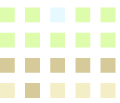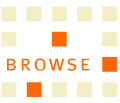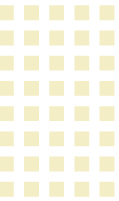






 |
|
This list of links should not be considered comprehensive; other very useful information may be found by browsing the internet on your own. ADDITIONAL WEB RESOURCES FOR DATA AND INFORMATION Wisconsin's Groundwater Directory Wisconsin's Water Library (University of Wisconsin Water Resources Library) Research Reports and Publications (University of Wisconsin Water Resources Institute) Water Resources Publications and Educational Materials (University of Wisconsin Extension) Guide to Finding Water-Related Information (University of Wisconsin Water Resources Library) Water Data for Wisconsin (U.S. Geological Survey Wisconsin Water Science Center) Wellowner.org (National Ground Water Association)
LINKS TO GROUNDWATER PROGRAMS Wisconsin
Department of Natural Resources - Division of Water U.S.
Geological Survey - Wisconsin Water Science Center Wisconsin Geological and Natural History Survey University of Wisconsin Water Resources Institute Wisconsin State Government Water Programs (from the University of Wisconsin Water Resources Institute) Wisconsin Groundwater Programs (from the University of Wisconsin Water Resources Institute) U.S. Environmental Protection Agency - Ground Water and Drinking Water LINKS TO ASSIST IN LOCATING GROUNDWATER AND PLANNING EXPERTISE Areas of interest and contact persons (Wisconsin Geological and Natural History Survey) Ground Water Systems Team (USGS Wisconsin Water Science Center) Groundwater Staff Directory (Wisconsin Department of Natural Resources) American Planning Association - Wisconsin Chapter Association of Natural Resource Extension Professionals Community Groundwater Planning and Implementation (Center for Land Use Education) |
|
RESOURCES CITED IN THE "FIND DATA AND POLICIES IN YOUR AREA" SECTION A1. Wisconsin Department of Natural Resources, 2006, Safe Water on Tap: 2005 Annual Drinking Water Report, Wisconsin's Public Water Systems: Madison, Wis.,Wisconsin Department of Natural Resources, 19 p. A2. Wisconsin Department of Natural Resources, Safe Water on Tap. Last accessed on October 1, 2007. A3. Wisconsin Department of Natural Resources, Information for Public Water System Owners and Operators. Last accessed on October 1, 2007. A4. Wisconsin Department of Natural Resources, Public Well Diagram. Last accessed October 1, 2007. A5. Wisconsin Department of Natural Resources, Information For Homeowners with Private Wells. Last accessed October 1, 2007. |
|
| GROUNDWATER PROTECTION POLICIES
B1. David Lindorff (Wisconsin Department of Natural Resources) and Ed Morse (Wisconsin Rural Water Association), personal communication. B2. Wisconsin Department of Natural Resources, Wisconsin Wellhead Protection Program Summary. Last accessed October 1, 2007. B3. Wisconsin Department of Agriculture, Trade and Consumer Protection, Local Ordinances. Last accessed October 1, 2007. |
|
| MONEY SPENT ON CLEANUP
C1. Wisconsin Department of Commerce, Petroleum Environmental Cleanup Fund Award. Last accessed October 1, 2007. C2. Dorothy White (PECFA Financial Manager, Wisconsin Department of Commerce) June 7, 2007, personal communication. C3. Chern, Laura, 2005, Nitrate Removal and Avoidance Costs for Wisconsin Municipalities: Madison, Wis., Wisconsin Department of Natural Resources. |
|
| GROUNDWATER USE
D1. Hutson, S.S., compiler, 2007, Guidelines for preparation of State water-use estimates for 2005: U.S. Geological Survey Techniques and Methods Book 4, Chap. E1, 36 p. D2. Lawrence, C.L., and Ellefson, B.R., 1982, Water use in Wisconsin, 1979: U.S. Geological Survey Water-Resources Investigations Report 82-444, 102 p. D3. Ellefson, B.R., Rury, K.S., and Krohelski, J.T., 1987, Water use in Wisconsin, 1985: U.S. Geological Survey Open-File Report 87-699, 1 sheet. D4. Ellefson, B.R., Sabin, T.J., and Krohelski, J.T., 1993, Water use in Wisconsin, 1990: U.S. Geological Survey Open-File Report 83-118, 1 sheet. D5. Ellefson, B.R., Fan, C.H., and Ripley, J.L., 1997, Water use in Wisconsin, 1995: U.S. Geological Survey Open-File Report 97-356, 1 sheet. D6. Ellefson, B.R., Mueller, C.D., and Buchwald, C.A., 2002, Water use in Wisconsin, 2000: U.S. Geological Survey Open-File Report 2002-356, 1 sheet. D7. Buchwald, C.A., 2008 or 2009, Water use in Wisconsin, 2005: U.S. Geological Survey Open-File Report, in development |
|
| SUSCEPTIBILITY OF GROUNDWATER TO CONTAMINANTS
E1. National Research Council, 1993, Ground water vulnerability assessment, contamination potential under conditions of uncertainty: Washington, D.C., National Academy Press, 210 p. E2. M. J. Focazio, T. E. Reilly, M. G. Rupert, D. R. Helsel, 2002, Assessing ground-water vulnerability to contamination: Providing scientifically defensible information for decision makers: U.S. Geological Survey Circular 1224, 33 p. |
|
| GROUNDWATER QUALITY
F1. Wisconsin Department of Natural Resources, Groundwater Retrieval Network. Last accessed October 1, 2007. F2. Figure created by Raquel Miskowski, University of Wisconsin-Stevens Point, Center for Land Use Education. Nitrate-nitrogen data are from sampling conducted during 1985-2004 as reported by the Wisconsin Department of Natural Resources, the Wisconsin Department of Agriculture, Trade and Consumer Protection, and the Central Wisconsin Groundwater Center. Data collected at other times or by other sources are not included. Land cover data: Wisconsin Department of Natural Resources, 1998, WISCLAND land cover (WLCGW930) 1991-1993. F3. Wisconsin Groundwater Coordinating Council, 2006, Report to the Legislature: Madison, Wis., Groundwater Coordinating Council, 199 p. F4. Shaw, B., 1994, Nitrogen Contamination Sources: A Look at Relative Contributions in Conference Proceedings – Nitrate in Wisconsin’s Groundwater: Strategies and Challenges: Stevens Point, Wis., University of Wisconsin-Stevens Point, Central Wisconsin Groundwater Center, p. 23. F5. Wisconsin Groundwater Coordinating Council, 2002, Residential Development and Groundwater Resources (fact sheet): Madison, Wis., Groundwater Coordinating Council, 4 p. F6. Figure is based on the results of over 35,000 Wisconsin private well samples compiled by David Mechenich at the Central Wisconsin Groundwater Center, University of Wisconsin-Stevens Point. "Other rural" land-use category is composed of grassland, water, wetlands, barren land and shrub land. High permeability soils are defined as having infiltration rates greater than 6 inches per hour, while low permeability soils have infiltration rates less than 6 inches per hour. F7. Wisconsin Department of Agriculture, Trade and Consumer Protection, May 2002, Groundwater Quality: Agricultural Chemicals in Wisconsin Groundwater. F8. Ward, M.H., Mark, S.D., Cantor, K.P., Weisenburger, D.D., Correa-Villasenor, A., and Zahm, S.H., 1996, Drinking water nitrate and the risk of non-Hodgkin's lymphoma: Epidemiology, vol. 7, no. 5, p. 465-471. F9. Xu, G., Song, P., Reed, P.I., 1992, The relationship between gastric mucosal changes and nitrate intake via drinking water in a high-risk population for gastric cancer in Moping county, China: Eurpoean Journal of Center Prevention, vol. 1, no. 6, p. 437-443. F10. Yang, C.Y., Cheng, M.F., Tsai, S.S., and Hsieh Y.L., 1998, Calcium, magnesium, and nitrate in drinking water and gastric cancer mortality: Japanese Journal of Center Research, vol. 89, issue 2, p.124-130. F11. Weyer, P.J., Cerhan, J.R., Kross, B.C., Hallberg, G.R., Kantamneni, J., Breuer, G., Jones, M.P., Zheng, W., and Lynch, C.F., 2001, Municipal drinking water nitrate level and cancer risk in older women: The Iowa Women’s Health Study: Epidemiology, vol. 11, no. 3, p. 327-338. F12. Moltchanova, E., Rytkonen, M., Kousa, A., Taskinen, O., Tuomilehto, J., and Karvonen, M., 2004, Zinc and nitrate in the groundwater and the incidence of Type 1 diabetes in Finland: Diabetic Medicine, vol. 21, p. 256-261. F13. Parslow, R.C., McKinney, P.A., Law, G.R., Staines, A., Williams, R. and Bodansky, H.J., 1997, Incidence of childhood diabetes mellitus in Yorkshire, northern England, is associated with nitrate in drinking water: an ecological analysis: Diabetologia, vol. 40, no.5, p. 550-556. F14. U.S. Geological Survey, 2006, Nutrients in the Mississippi River Basin and Hypoxia in the Gulf of Mexico. Last accessed October 1, 2007. F15. Webster, B., Markham, L., and Ohlrogge, P., 2005, Private well testing and education program leads to comprehensive water study: Stevens Point, Wis., University of Wisconsin-Stevens Point, Center for Land Use Education, 2 p. F16. Mechenich, D., and Kraft, G., 1997, Contaminant Source Assessment and Management Using Groundwater Flow and Contaminant Models: Stevens Point, Wis., Central Wisconsin Groundwater Center, University of Wisconsin-Stevens Point. F17. Osborne, T., Curwen, D., and Shaw, B., 1990, Quantifying groundwater quality and productivity effects of agricultural best management practices on irrigated sands: Proceedings of the Symposium on Agricultural Impacts on Groundwater Quality: Ground Water Management, vol. 1, p. 129-143. F18. Turyk, N., Browne, B., and Russelle, M., 2004, Does Management Intensive Grazing Protect Groundwater Quality by Denitrification?: Stevens Point, Wis., University of Wisconsin-Stevens Point, Center for Watershed Science and Education, 35 p. F19. Pimentel, D., Hepperly, P., Hanson, J., Douds, D., and Seidel, R., 2005, Environment, energy, and economic comparisons of organic and conventional farming systems: Bioscience, vol. 55, no. 7, p. 573-582. F20. U.S. Department of Agriculture, 2006, CSREES Research Results: Organic and Integrated Farming Key to Lowering Nitrogen Leaching. Last accessed October 1, 2007. F21. McIsaac, G.F., and Cooke, R.A., Evaluation of Water Quality from Alternative Cropping Systems Using a Multiple-Paired Design. Last accessed October 1, 2007. F22. Webster, B., and Markham, L., 2005, Cropping agreements to reduce nitrates in drinking water (fact sheet): Stevens Point, Wis., University of Wisconsin-Stevens Point, Center for Land Use Education, 2 p. F23. Wisconsin Administrative Code, Comm 83.035, Private onsite wastewater treatment systems. Last accessed October 1, 2007. F24. Vanden Brook, James P., and others, 2002, Agricultural Chemicals in Wisconsin Groundwater, Final Report: Madison, Wis., Wisconsin Department of Agriculture, Trade and Consumer Protection, 21 p. F25. Wisconsin Department of Agriculture, Trade and Consumer Protection, Atrazine Prohibition Areas. Last accessed October 1, 2007. F26. Wisconsin Department of Agriculture, Trade and Consumer Protection, Frequently Asked Questions. Last accessed October 1, 2007. F27. Wisconsin Agricultural Statistics Service, 2006, Wisconsin Pesticide Use. Last accessed October 1, 2007. F28. Wisconsin Department of Agriculture, Trade and Consumer Protection, Atrazine. Last accessed October 1, 2007. F29. Vanden Brook, James P., and others, 2002, Agricultural Chemicals in Wisconsin Groundwater, Final Report: Madison, Wis., Wisconsin Department of Agriculture, Trade and Consumer Protection, 21 p. F30. Jackson, G., B. Webendorfer, B. Shaw, J. Harkin, 1989, Pesticides in Groundwater: How They Get There, What Happens to Them, How to Keep Them Out: Madison, Wis., University of Wisconsin-Extension Publication G3212, 6 p. F31. U.S. Environmental Protection Agency, Consumer factsheet on atrazine. Last accessed October 1, 2007. F32. U.S. Environmental Protection Agency, Consumer factsheet on alachlor. Last accessed October 1, 2007. F33. University of Wisconsin-Madison, College of Agriculture and Life Sciences, Integrated Crop and Pest Management. Last accessed October 1, 2007. F34. University of Wisconsin-Madison/Extension Department of Urban and Regional Planning and Wisconsin Department of Natural Resources, 2002, Planning for Natural Resources - A Guide to Including Natural Resources in Local Comprehensive Planning: Madison, Wis., Wisconsin Department of Natural Resources, 88 p. F35. Conners, Diane, 2005, Go Organic, Get a Tax Cut: Iowa County hopes incentives will boost population and economy: Traverse City, Mich., Michigan Land Use Institute. Last accessed October 1, 2007. F36. Wisconsin Department of Natural Resources, 2006, Arsenic in Drinking Water: Madison, Wis., Wisconsin Department of Natural Resources, PUB-DG-062 2006, 2 p. F37. Wisconsin Department of Natural Resources, Construction Specifications and Conditions for Arsenic Replacement Wells. Last accessed October 1, 2007. F38. Root, T., Bahr, J.M., and Gotkowitz, M.B., 2005, Controls on arsenic concentrations in groundwater near Lake Geneva, Wisconsin, in O'Day, P.A., Vlassopoulos, D., Meng, X., and Benning, L.G. (eds.), Advances in Arsenic Research: Washington, D.C., American Chemical Society Symposium Series, vol. 915, p. 161-174. F39. Bahr, J.M., and Gotkowitz, M.B., 2004, Arsenic contamination in Southeast Wisconsin: Sources of arsenic and mechanisms of arsenic release. Last accessed October 1, 2007. F40. Wisconsin Department of Natural Resources, 2003, Volatile Organic Chemicals in Drinking Water: Publication PUB-DG-009 00. Last accessed October 1, 2007. F41. Morse, Ed, 2005, Drugs in Our Water?: Plover, Wis., Wisconsin Rural Water Association. F42. Kevin Masarik (University of Wisconsin-Stevens Point, Central Wisconsin Groundwater Center), 2007, personal communication. F43. Wisconsin Department of Natural Resources, 2007, personal communication. Spreadsheet provided by Wisconsin Department of Natural Resources included data from Wisconsin Department of Agriculture, Trade and Consumer Protection and/or the Central Wisconsin Groundwater Center. F44. The new drinking water limit for arsenic went into effect on January 23, 2006. Based on health study results, the U.S. Environmental Protection Agency lowered the limit from 50 to 10 parts per billion. F45. U.S. Department of Agriculture, National Agricultural Statistics Service, Quick Stats: Agricultural Statistics Data Base. Last accessed October 1, 2007. F46. Wisconsin Agricultural Statistics Service, 2006, Wisconsin Pesticide Use. Last accessed October 1, 2007. |
|
| POTENTIAL SOURCES OF CONTAMINANTS
G1. Wisconsin Groundwater Coordinating Council, 2002, Groundwater and Its Role in Comprehensive Planning: Madison, Wis., Groundwater Coordinating Council, Comprehensive Planning and Groundwater Fact Sheet 1, 4 p. G2. Wisconsin Department of Natural Resources, Bureau of Remediation and Redevelopment Tracking System. Last accessed October 1, 2007. G3. Wisconsin Department of Natural Resources, Wisconsin’s WPDES Permitted Confined Animal Feeding Operations (map). Last accessed October 1, 2007. G4. Wisconsin Department of Natural Resources, Solid Waste Landfills Licensed in Wisconsin, Licensed for Year 2007 (Oct. 1, 2006-Sept. 30, 2007). Last accessed October 1, 2007. G5. Wisconsin Department of Natural Resources, Wisconsin's Solid Waste Management Program. Last accessed October 1, 2007. G6. Wisconsin Department of Natural Resources, Superfund Sites in Wisconsin - Wisconsin Sites on the National Priorities List (NPL). Last accessed October 1, 2007. G7. Wisconsin Department of Natural Resources, Superfund. Last accessed October 1, 2007. |
For more information about this site, its contributors, and the data contained herein, click here.
For
assistance concerning comprehensive planning, please contact Lynn
Markham, UW-Stevens Point.
For assistance concerning groundwater, please contact Charles
Dunning, USGS.
Page contact: Webmaster, USGS
Page last updated: July 31, 2008